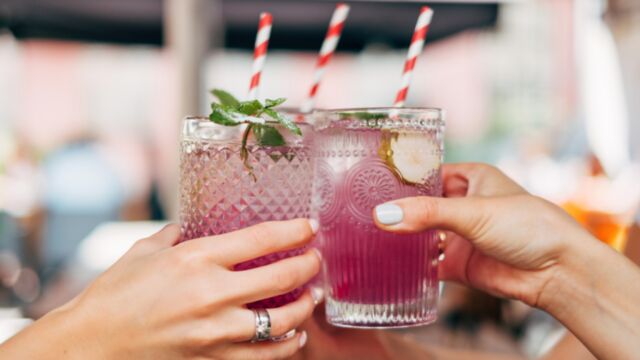Good news for all those who have been sorely missing a cocktail in the sunshine, The Sunhas reported that if coronavirus cases keep falling, pubs and restaurants may be able to resume outdoor service as early as April.
Discover our latest podcast
Pubs to potentially open for outdoor service in Spring
A minister revealed to the news outlet that ‘We will hopefully be sipping pints in the spring sunshine sooner rather than later.’
The hopeful announcement comes as the country finally reached an R rate of below one nationwide for the first time since July. Over the weekend scientists revealed that the R rate was between 0.7 and 0.9, with places such as London even reaching below 0.44. According to the University of Cambridge, an estimated 35% of people living in the city have already contracted the virus.
Over the weekend the country also reached its first vaccine target as 15 million Brits in priority categories have now had their first dose. Prime Minister Boris Johnson announced:
Today we have reached a significant milestone. No one is resting on their laurels... We've still got a long way to go and there will undoubtedly be bumps in the road, but after all we've achieved, I know we can go forward with great confidence.
Key dates for possible restriction easing
With all this good news, it is no surprise that the government is now forming an outline of how lockdown will be lifted. Prime Minister Boris Johnson is not expected to release the full and official lockdown easing plan until the 22nd of February. However, multiple Whitehall sources and ministers' have already supplied a rough outline of what we can expect. Although, a source warned that lockdown may not be eased as fast as we all would like:
Things won't reopen as quickly as some may want. We will be cautious, opening one thing to see how it goes before moving to the next.
March
Boris Johnson announced a while back that schools would be reopening from the 8th of March at the very earliest. So far, he is expected to follow through on this promise.
By next month it is also expected that friends and family from the same household (or one other person) will be able to share some time outside. However, household mixing will still be prohibited.
April
Come the spring, government officials are hoping that non-essential stores will be able to reopen. Ministers are also currently deciding whether pubs will also be able to open for outdoor service at this time and the rules surrounding such event. Sources revealed to The Sun that rules such as ‘substantial meals’ and the 10pm curfewcould even be scrapped:
Things that were proven to be a hindrance like 10pm drinking up, will go. If pubs are to reopen for good they've got to do it properly and can't be stuck in limbo like last year.
Another person added that 'ventilation is key to tackling the virus so expect a major push to drink outside to begin with, especially for larger groups.'
May
In May it is expected that pubs and restaurants will be fully reopened for service. However, as a compromise, the rule of six, as well as the two-metre social distancing rule, are expected to last the entire summer to compensate for the early re-openings.
June
It has also so far been speculated that sports fans will be able to return to their stadium side seating as early as June. However, spectators may have to prove they have tested negative for the virus upon attending.
July
SAGE scientists have revealed that by July, they expect that England could have finally achieved herd immunity. Professor Andrew Hayward revealed:
We will be more or less back to normal for the summer.
However, a government source revealed that it is still ‘very early days’ and has encouraged people to wait for the official roadmap to be released. This is because re-openings across the country are widely dependant on vaccinations. Professor Neil Ferguson, government advisor and lockdown architect revealed:
Certainly, by May, we hopefully will be in a place much more like we were back last October. In something akin to Tier 2. And maybe, if there are areas with very low incidence by that time, we’d move to Tier 1-type measures.















